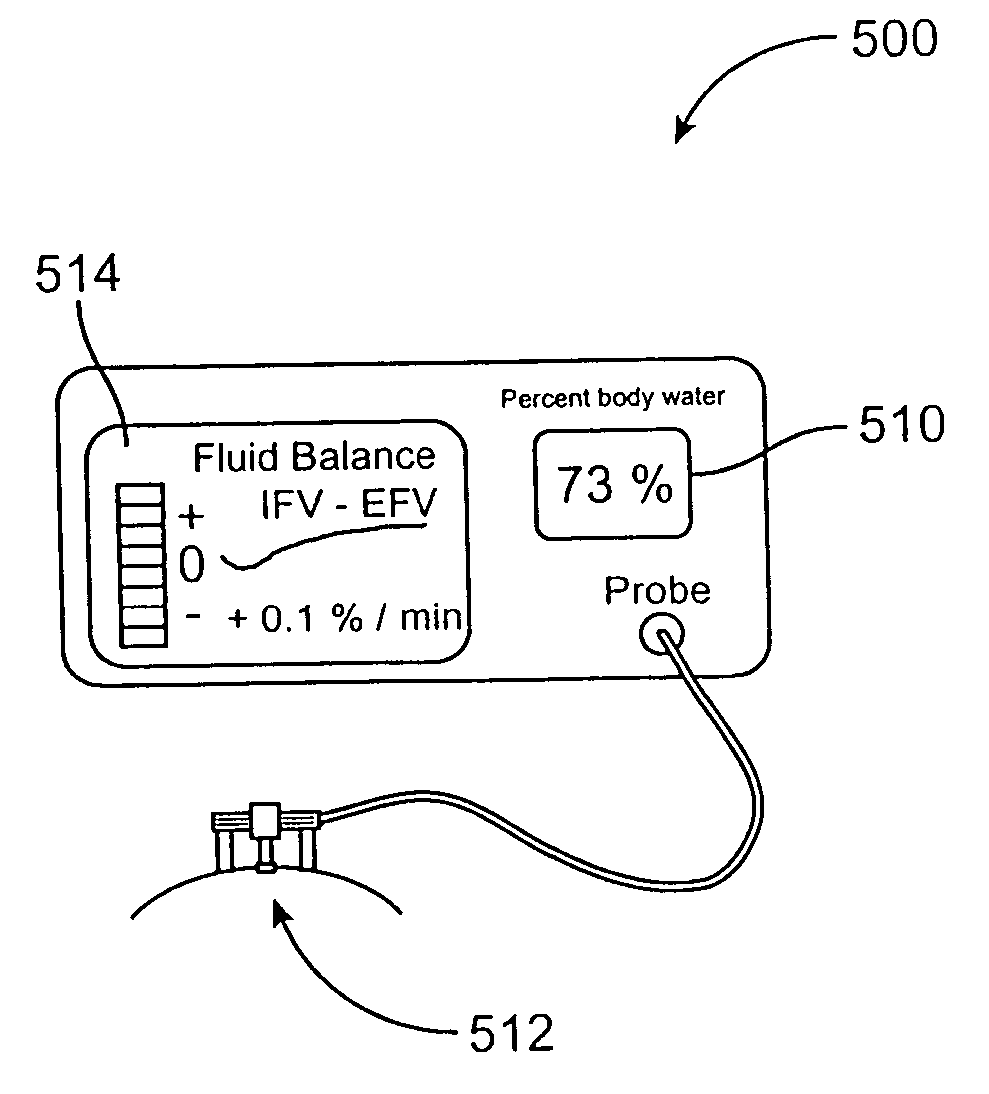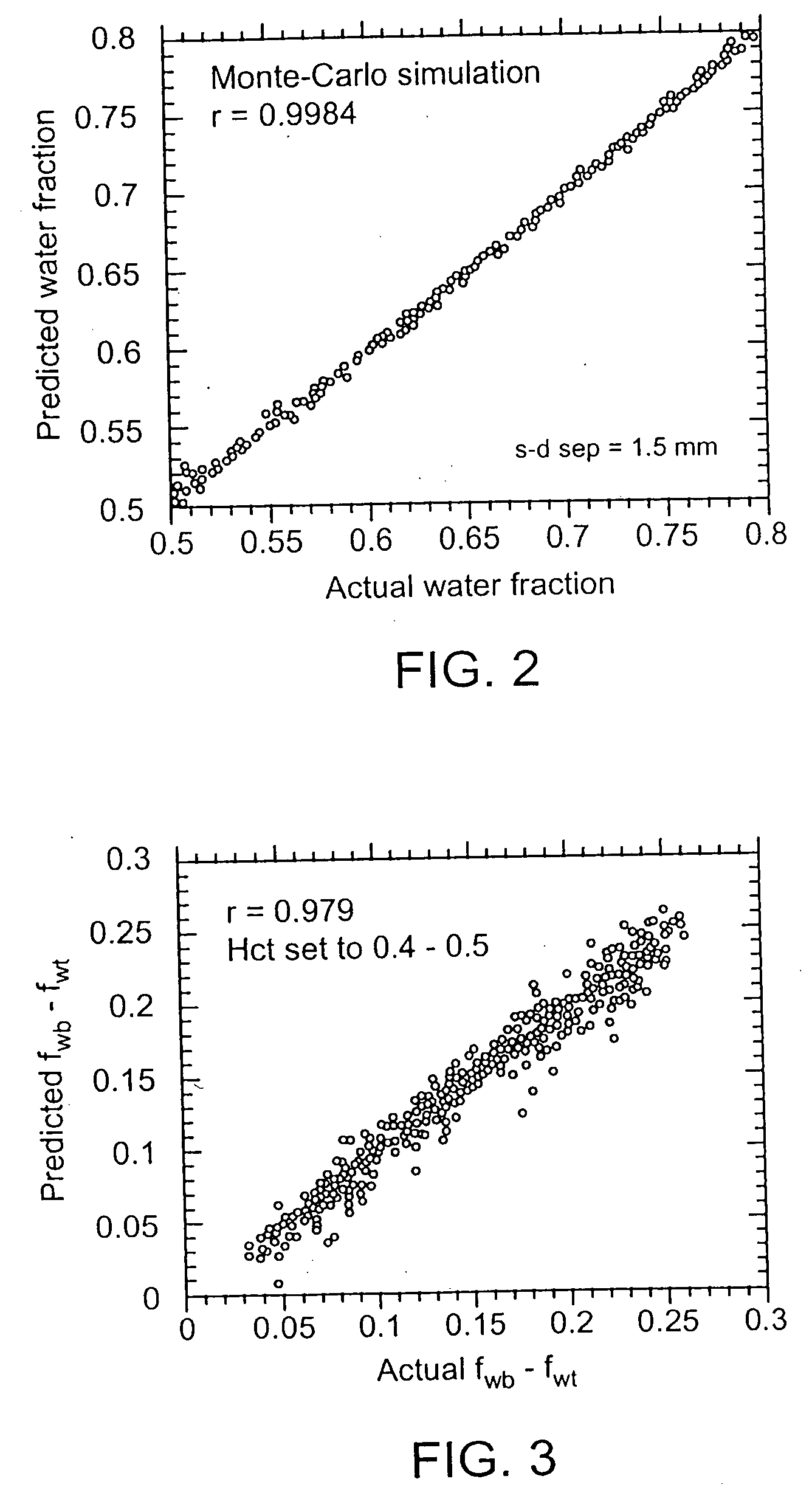Device and method for monitoring body fluid and electrolyte disorders
- Summary
- Abstract
- Description
- Claims
- Application Information
AI Technical Summary
Benefits of technology
Problems solved by technology
Method used
Image
Examples
Embodiment Construction
[0014] Embodiments of the present invention overcome the problems of invasiveness, subjectivity, and inaccuracy from which previous methods for body fluid assessment have suffered. The method of diffuse reflectance near-infrared (“NIR”) spectroscopy is employed to measure the absolute fraction of water in skin. An increase or decrease in the free (non protein-bound) water content of the skin produces unique alterations of its NIR reflectance spectrum in three primary bands of wavelengths-(1100-1350 nm, 1500-1800 nm, and 2000-2300 nm) in which none-heme proteins (primarily collagen and elastin), lipids, and water absorb. According to the results of numerical simulations and experimental studies carried out by the inventor, the tissue water fraction fw, defined spectroscopically as the ratio of the absorbance of water and the sum of the absorbances of none-heme proteins, lipids, and water in the tissue, can be measured accurately in the presence of nonspecific scattering variation, te...
PUM
 Login to View More
Login to View More Abstract
Description
Claims
Application Information
 Login to View More
Login to View More - R&D
- Intellectual Property
- Life Sciences
- Materials
- Tech Scout
- Unparalleled Data Quality
- Higher Quality Content
- 60% Fewer Hallucinations
Browse by: Latest US Patents, China's latest patents, Technical Efficacy Thesaurus, Application Domain, Technology Topic, Popular Technical Reports.
© 2025 PatSnap. All rights reserved.Legal|Privacy policy|Modern Slavery Act Transparency Statement|Sitemap|About US| Contact US: help@patsnap.com



